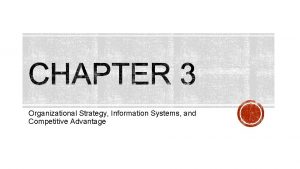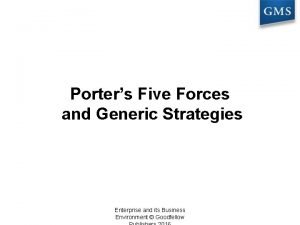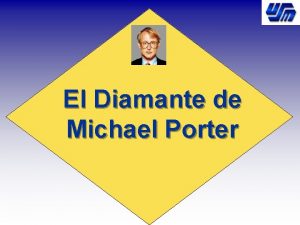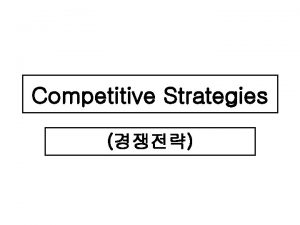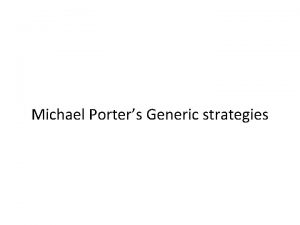The competitive strategies Michael Porter has argued that





- Slides: 5

The competitive strategies Michael Porter has argued that a firm's strengths ultimately fall into one of two headings: cost advantage and differentiation. By applying these strengths in either a broad or narrow scope, three generic strategies result: cost leadership, differentiation, and focus. These strategies are applied at the business unit level. The following link illustrates the principles of competitive strategies www. magnusconsultants. com/pdf/porter_generic_strat egies. pdf https: //www. youtube. com/watch? v=vu-c. Fb. Ts. Y 8 U

The Porter’s five forces Porter’s model considers five forces that determine the attractiveness of your market by analyzing the competitive intensity. What he meant by a particular market being attractive was its overall industry profitability, which was assessed by looking at the potential opportunities and risks. The five key factors the model used to identify and evaluate opportunities and risk are: - Competitive rivalry; - Threat of new entrants - Threat of substitutes - Bargaining power of suppliers - Bargaining power of customers The following file explain the content of the model http: //www. free-management-ebooks. com/dldebk-pdf/fme-five-forces-framework. pdf Watch the interview to Micheal Porter https: //www. youtube. com/watch? v=m. YF 2_FBCv. Xw

The value chain Value chain analysis describes the activities within and around an organization, and relates them to an analysis of the competitive strength of the organization. Therefore, it evaluates which value each particular activity adds to the organizations products or services. This idea was built upon the insight that an organization is more than a random compilation of machinery, equipment, people and money. Only if these things are arranged into systems and systematic activates it will become possible to produce something for which customers are willing to pay a price. Porter argues that the ability to perform particular activities and to manage the linkages between these activities is a source of competitive advantage. The following link explain the model http: //www. fao. org/fileadmin/user_upload/fisheries/docs/Value. Chai n. pdf

The SWOT Matrix The SWOT analysis is a business analysis technique that your organization can perform for each of its product, services, and market when deciding on the best way to achieve future growth. The process involves identifiyng the strengths and weaknesses of the organization, and opportunities and threats present in the market that it operates in. The first letter of each of these four factors creates the acronym SWOT. The strengths are internal factor that are favourable for achiving your organizationa’s objectives; The weaknesses are internal factor that are unfavourable for achiving your organizationa’s objectives; The opportunities are external factor that are favourable for achiving your organizationa’s objectives; The threats are external factor that are unfavourable for achiving your organizationa’s objectives; The following pdf file explain the content and potential application of SWOT Matrix http: //www. free-management-ebooks. com/dldebk-pdf/fme-swot-analysis. pdf

The marketing strategy and plan Marketing is a process of creating value for the customer. It is a set of activities to educate, communicate with, and motivate the targeted consumer about the firm’s services or the company’s product and services. Traditionally, this set of activities, the “marketing mix, ” is represented by four parts, the wellknown “ 4 P’s of Marketing”: price, product, placement, and promotion. But to create a marketing strategy and plan that touch on all areas necessary to position a product in the market to maximize sales revenues, there are multiple areas to be tackled. � � � � An effective marketing strategy/plan is an ongoing value-creating process composed of several elements: Marketing segmentation. Marketing strategy. Market research. Pricing. Placement. Value chain. The following pdf file illustrates the link between marketing strategy and Porter’s tools http: //www. abahe. co. uk/business-administration/Marketing-Strategy-and-Competitive. Analysis. pdf



